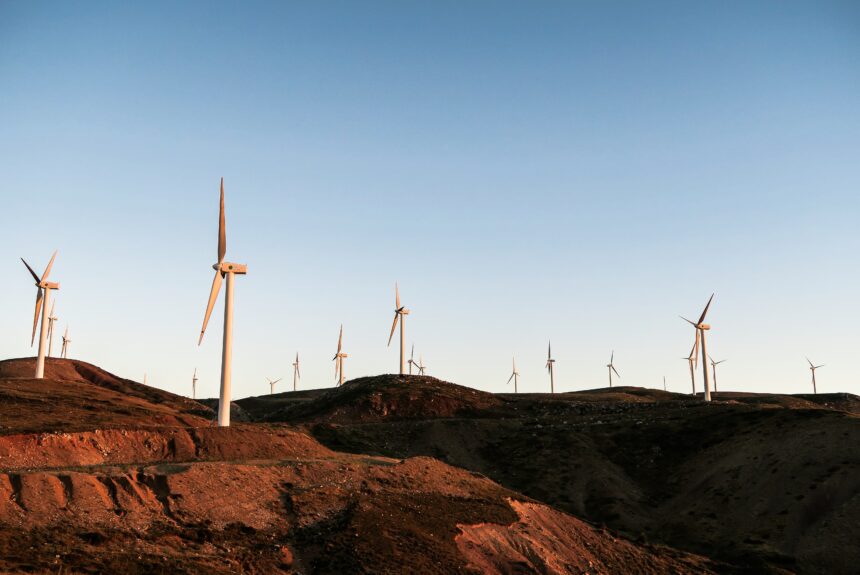The Biden administration is reaching for an energy policy lever it shouldn’t be pulling. With clean energy actions proving challenging in the midst of the ongoing energy crisis, the administration is turning to the Defense Production Act (DPA) to speed up the process.
While the administration is justified in its attempt to accelerate congested processes to facilitate a clean energy buildout, such as mining critical minerals and boosting the solar panel supply chain, these actions properly belong in the realm of legislative and regulatory action – not the Defense Production Act.
>>>READ: Reduce Mining Regulations to Bolster a Secure Energy Future
Using the DPA – a wartime measure to boost supplies critical to national security – is a band-aid solution to a deeper problem. For instance, the administration’s invoking of the DPA to subsidize mining for minerals needed for battery storage, electric vehicles, and solar panels does little to address why such mining in America is currently stalled. Miles of red tape – ironically including some enacted by the Biden administration – prevent American miners from taking advantage of the abundance of these minerals on our own lands. Opening a mine in America takes nearly five times as long as in Canada or Australia, contributing greatly to why America is nearly entirely import-dependent on these materials. If the administration wants more domestic mining, cutting red tape would go further than cutting checks.
The administration’s short-sighted use of the DPA to subsidize domestic solar panel manufacturing highlights additional problems. Increasing domestic solar panel production is a worthy goal, but subsidies will only distort solar power’s already-favorable economics. Long-term certainty is needed for the energy industry and investors to function well — certainty which is derived from legislative and well-reasoned regulatory action. DPA usage is fickle, and it lurches from administration to administration. The Trump administration, for example, considered using the DPA to bail out coal plants. How beneficial is it for industries to make years-long decisions based on policies that can be reversed at the stroke of a pen?
The process of meticulous regulation and legislation — however arduous — ensures the longevity and stability of the act itself. Increasing clean energy production is a worthwhile goal, but by using the DPA, Biden inadvertently undercuts the power of the act.
In other aspects, the Biden administration is making progress within the boundaries of the legislative and regulatory system to expedite the generation of more clean energy.
For instance, the Department of the Interior recently approved the construction of a 416 mile transmission line through Wyoming, Colorado, and Utah that will help integrate two gigawatts of renewable energy – enough to power 600,000 homes – into the Western grid. The American West is full of wind and solar energy resources, and increasing transmission capacity is key to unlocking this potential, as the best sites are often located far away from energy-consuming population centers. However, because the federal government owns much of Western lands, developing those resources often gets snared in bureaucracy. Forward-looking regulatory action like this is hopefully the first of many steps in the right direction.
Similarly, the Department of Energy (DOE) and the Federal Energy Regulatory Commission (FERC) are taking steps to make the process of connecting clean energy resources to the grid simpler, faster, and fairer. The current process is so congested that over 1,400 gigawatts of generation — 90% of which is wind, solar, and battery storage — are stuck in line and unable to produce electricity. This congestion drives up the cost of energy produced from these resources at a time when greater electric generation capacity is needed.
Recently, DOE initiated a program working with project developers, grid operators, and state governments to untangle the process, and FERC proposed reformed grid interconnection rules to be decided later this year. Addressing serious regulatory problems in the proper way is necessary to provide a secure operating environment for future developments.
>>>READ: Cut Tariffs to Cut Emissions
Making sound regulatory changes while simultaneously invoking the DPA to advance energy policy makes it seem as if the Biden administration’s right hand does not know what its left is doing. The necessity of critical minerals and manufacturing parts should be a reason to open the market to benefit from America’s resources, not invoke convoluted rules to subsidize them.
The right process gets the right results, and legislative and regulatory actions are key to creating a viable, long-term playing field. The DPA is not a get-out-of-jail-free card, and the administration should stop using it as one.
Jakob Puckett is an energy analyst and a Young Voices Contributor. Follow him on Twitter @jakobrpuckett.
The views and opinions expressed are those of the author’s and do not necessarily reflect the official policy or position of C3.
